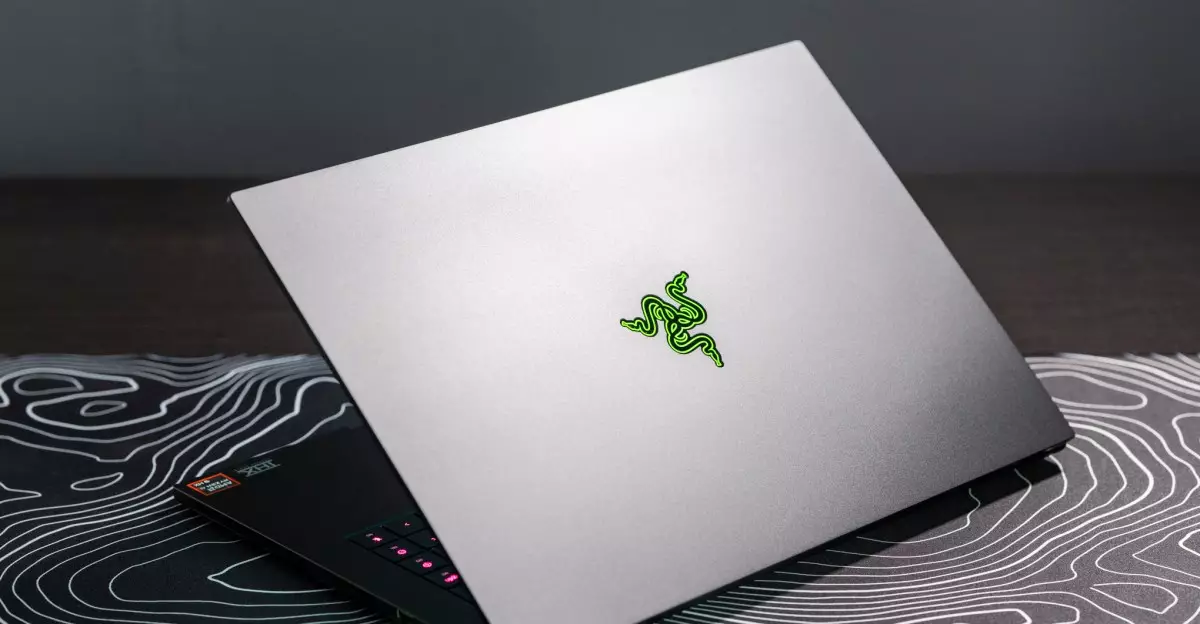Razer has long been at the forefront of the gaming laptop market, consistently pushing boundaries to provide powerful yet portable devices. The introduction of the Razer Blade 16 marks a significant pivot in the gaming laptop landscape, especially with its integration of Nvidia’s RTX 5090 GPU. Not only is this flagship model designed to compete favorably with high-end laptops like the MacBook Pro, but it also ushers in an era where gamers and professionals alike can appreciate a sleek, refined aesthetic without compromising performance.
This latest iteration of the Blade series is not just a simple update; the company claims to have crafted a machine that embodies both power and style. The objective is clear: to deliver a gaming laptop that can double as a reliable workstation while boasting a design that doesn’t scream “gaming device.” But does it truly live up to this promise?
Thinner, Lighter, Yet Familiar
One of the most notable features of the Razer Blade 16 is its thinner and lighter chassis, shedding nearly 7mm in thickness and approximately 0.8 pounds from earlier models. The system feels robust yet surprisingly lightweight, making it an appealing option for gamers who are often on the move. However, this slimming down may come at a cost. As any seasoned gamer knows, cooling is critical, especially during intensive gaming sessions. Initial impressions suggest that while the chassis may be extraordinary, its thermal performance needs thorough examination to ensure it can handle prolonged periods of gaming without overheating or throttling.
Additionally, an external cooling solution often touted by Razer raises eyebrows. The Razer Laptop Cooling Pad, which promises to enhance power output significantly, introduces an issue of additional noise and cost. The concept of amplifying performance while battling potential noise pollution exemplifies a common contention within the gaming community. Must we continuously buy add-ons to maximize performance, particularly in an already high-priced device?
Display and Interface: Love-Hate Relationships
The Razer Blade 16 features a stunning 16-inch OLED display with a resolution of 2560 x 1600 and an impressive 240Hz refresh rate. For gamers and creatives, the vibrant colors and deep contrasts are a major plus, immersing users into their gaming worlds and design projects alike. However, not everything is perfect. The keyboard layout introduces a curious design choice with a new column of macro keys that may prove more perplexing than beneficial. Reaching for a simple arrow key may inadvertently mute your microphone—a frustration that could easily disrupt workflow during crucial events.
Despite these quirks, the keyboard and trackpad maintain an overall standard of excellence associated with Razer products. Gamers will appreciate the tactile feedback, while creators will find navigation smooth enough to support intensive tasks.
Perplexing Performance Expectations
A significant contention arises from the laptop’s performance, particularly regarding battery life. The RTX 5090 promises a 20 percent efficiency improvement over its predecessor, yet observers have noted that even with modest productivity applications running, battery life seems alarmingly short. The Blade 16 struggles to last through a typical workday—five and a half hours at best. This is disheartening, considering competing devices regularly exceed eight hours under similar conditions.
With the advancements heralded alongside the RTX 5090, one must wonder if there is a mismatch between expectations and reality. If a laptop marketed for heavy gaming and creative workflows can’t deliver adequate battery life, it raises serious questions about its suitability as an all-in-one solution.
Value Proposition: A Costly Commitment
At a hefty price tag of $4,499.99, the Razer Blade 16 positions itself as a premium option in a competitive market. Yet, the reality of occasional blue screens and battery struggles may leave prospective buyers scratching their heads. For less than half the cost, alternatives such as the MacBook Pro or even mid-tier gaming laptops provide robust performance and reliability. Razer’s product undeniably exudes elegance and offers fantastic gaming experiences, but does it justify its price when pitfalls threaten the promise of versatility?
In the dynamic environment of high-performance laptops, finding a singular device that excels at multiple functionalities without debilitating overhead costs remains challenging. While the Razer Blade 16 offers a tantalizing glimpse into the future of gaming laptops, whether it stands the test of real-world application is yet to be fully seen. The blend of beauty, power, and frustration encapsulates the dichotomy of modern gaming devices, leaving us all wondering if the investment is worth it.

